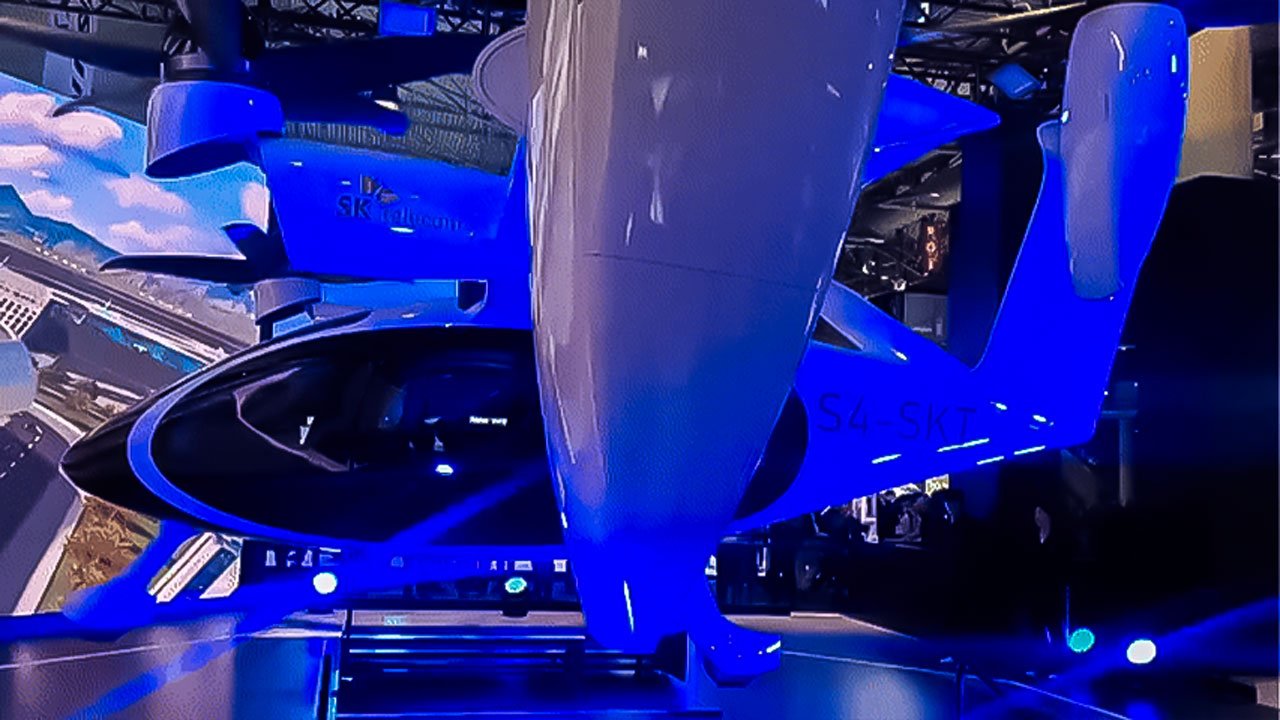UAM Leading The Way In Pioneering Flying Taxis Is Led By Telecommunication Companies

Urban air traffic (UAM) technology competes at MWC24 Mobile carriers’ plans for a flying taxis business are starting to take shape. Following domestic telecommunications companies that are actively participating in the urban air traffic (UAM) business, foreign telecommunication companies are also beginning to turn their attention to the UAM business.
Flying Taxis
SK Telecom unveiled the actual UAM aircraft and filled the exhibition hall with crowds. KT attracted the attention of visitors by introducing traffic management system (UATM) technology that can systematically operate UAM.
SK Telecom displayed the actual 5-seater electric air taxi at the Pira Gran Via Hall 3 exhibition hall. This aircraft was introduced in collaboration with Job Aviation. It is scheduled to transport people as early as next year.
SK Telecom and Joby Aviation are continuing to collaborate to introduce zero-emission air taxi services throughout Korean cities as part of the Ministry of Land, Infrastructure and Transport’s ‘K-UAM Grand Challenge’ demonstration project. SK Telecom made an equity investment of $100 million in Joby Aviation last year and secured exclusive rights to use the aircraft.
This aircraft can accommodate a total of 5 people, including 1 pilot and 4 passengers. It can fly at 321 km/h and is 100 times quieter than a helicopter. At MWC24, SK Telecom allowed visitors to experience the Gimpo Airport-Walkerhill route flight through a large LED screen in advance, allowing them to experience UAM services based on AI and network capabilities in advance.
KT introduced UATM technology incorporating digital twin. There are several flight routes between Vertiport, a vertical takeoff and landing airport that is like a sky taxi stop. KT has secured an algorithm to find the optimal route by comprehensively considering data such as no-fly areas such as downtown high-rise buildings and military facilities, and floating population.
At the flight approval stage, UAM Traffic Twin analyzes the flight plan submitted by the operator through real-time simulation. If a dangerous situation such as a collision is predicted, considering various factors such as vertiport availability, airspace congestion, aircraft condition, and weather, the flight schedule is adjusted to reduce the risk of an accident.
Additionally, if an emergency patient occurs during the flight or an emergency situation such as a gust of wind occurs, the situation is quickly reported to emergency management systems such as 119, the operating company, and Vertiport. This means that both takeoff and landing can be controlled using UATM technology.
At the KT exhibition hall, you can also experience ‘Sky Pass’ technology to provide stable communication services to UAM. Skypass provides 5G aviation communication services in the corridor (300-600m altitude, 100m width) that is the UAM flight path.
It consists of an aviation network coverage optimization solution, a specialized antenna tailored to the characteristics of the UAM corridor, and base station remote control technology that can dynamically supplement aviation network coverage. Along with Skypass, KT also demonstrated ‘5G-satellite dual link’ technology that connects 5G and satellite communications simultaneously.
By expanding aviation communication network coverage to areas outside the corridor, we have created an environment where satellite communication can be used to stably connect even in environments where UAM aircraft deviate from their normal routes or 5G communication is difficult.
e& Group, the largest telecommunications company in the Middle East, has also begun to accelerate preparations for UAM services.
EN Group was the first overseas telecommunications company to introduce UAM service at MWC. The aircraft presented by EN Group at the MWC exhibition hall is the EHang model. EHang is a company that became famous for its drones that carry people at CES in the past, and has recently been accelerating its vertical takeoff and landing aircraft business.
The Chinese government is also active in commercializing UAM. Meanwhile, the company that granted the first operational qualifications for self-driving drones is EHang, which joined hands with EN Group.
See More:
SK Focusing On AI, Asks Samsung For Cooperation Taewon Choi “Let’s Meet Separately” [MWC24]
Samsung Galaxy Ring Unveiling Is Better Than Gucci’s 1.25 Million
LG U+ Why Not Boosters Season 2 Cumulative Views 24 Million Times
Leave a Comment